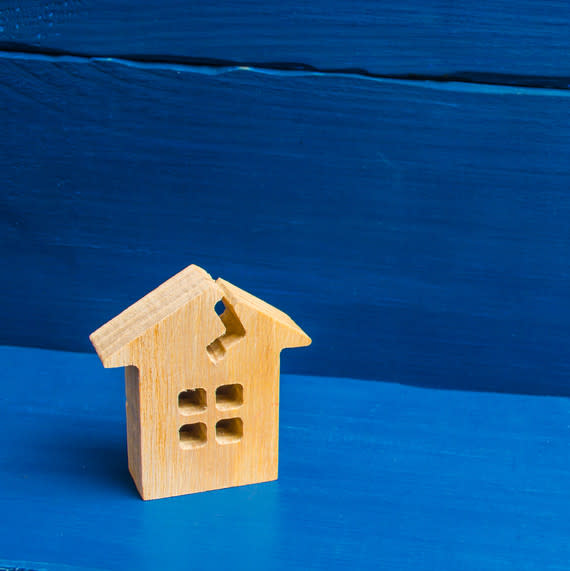Four Ways to Help Protect Your Home from a Hurricane

At the height of hurricane season, keeping you, your family, and your home safe can be both crucial and daunting. There are many important steps to take ahead of time, including making an emergency kit, knowing your evacuation route, and having an exit strategy in place in case the situation gets too dire. And while your safety is of utmost importance, it's natural to worry about your property as well.
Homeowners may feel helpless as a hurricane approaches—but there are also preventative actions that you can take to make sure your home is fortified and damage remains minimal. We spoke with Dan DiClerico, a smart home expert with HomeAdvisor.com, to create a checklist that anyone can complete before a hurricane arrives.
Related: How to Prevent and Repair Flood Damage in Your Home
Eliminate Risks in Your Yard
On a windy day, you might have a few potted plants tip over—but imagine what could happen if hurricane-force winds hit. These heavy items could potentially whip through the air during a storm and break windows as well as damage other exterior features of your home. It's important to secure all of the outdoor items you might have around the exterior of your home, from playground sets to grills and patio furniture. Be sure to tie these items down (or break them down, if necessary) before the gusts of wind arrive. If they're valuable enough, consider bringing them inside, DiClerico advises, as just a few inches of moving flood waters can easily sweep contents off your lawn.
If you are able to, try and replace the gravel and rock around any landscaped areas in the yard with shredded bark. Because this material is much lighter, it's less likely to cause as much damage in the storm, according to the Insurance Information Institute.
Get Your Landscaping Done
Even if you have a well-manicured lawn, outdoor features become much more of a hazard during a hurricane. You'll want to make sure all of your trees are pruned and in good shape, as DiClerico says it's smart to trim large branches at risk for breaking or falling onto your home. The same can be said for flower beds, which should be neat and edged as much as possible and should be relocated if they're too close to the foundation of your home. "Garden beds can trap water and send it back towards the house rather than away from it," DiClerico says.
Making sure your gutter system is free of debris and able to divert rainwater away from your home and prevent flooding. Cleaning your gutters is a must, and you'll also want to make sure all gutters lead to a downspout, which should connect to a leader pipe that runs along the ground and away from your home.
RELATED: How To Clean Up After a Hurricane
Help Food Last Longer
If a hurricane is still hours out, do what you can to keep perishable foods fresh for longer by turning your refrigerator and freezer to the coldest settings and opening each only when absolutely necessary. This will help prevent any spoilage if your home loses power, according to the Department of Homeland Security's ready.gov. If you're worried about the food in your fridge during the power outage, there's a simple trick you can use to determine whether or not it's still safe to eat. All you need is a cup of water and a quarter: freeze the water beforehand, and place a quarter on top of the water before the storm arrives. If you notice that the quarter has sunk all the way to the bottom of the cup during your power outage—signaling that your food thawed completely—that's a solid sign that your groceries may no longer be safe to eat.
Keep Inside Doors Closed
It's not just the exterior entryways you'll want to keep shut and sealed up before a hurricane. The Insurance Institute for Business & Home Safety suggests keeping interior doors closed too to help minimize damage. In the event that an exterior window or door breaks, the home will begin filling up with air increasing the force pushing up on your roof—and the chance it detaches. According to the institute's test study of a 1,400-square-foot single-story home, closing interior doors reduced the extra force on the roof by 30 percent.
